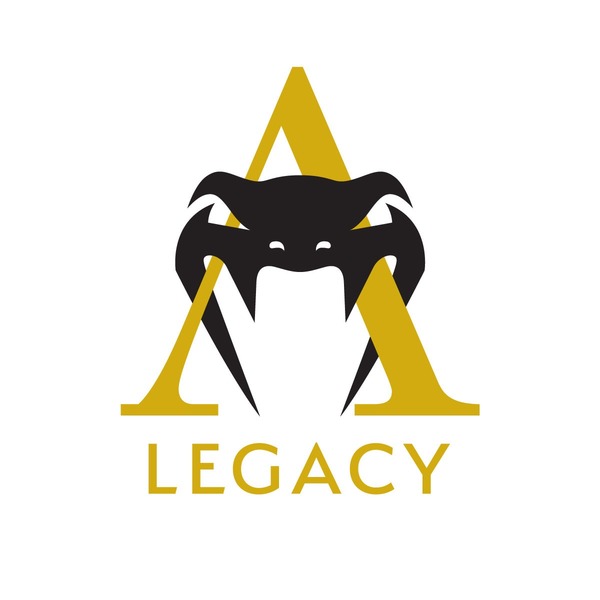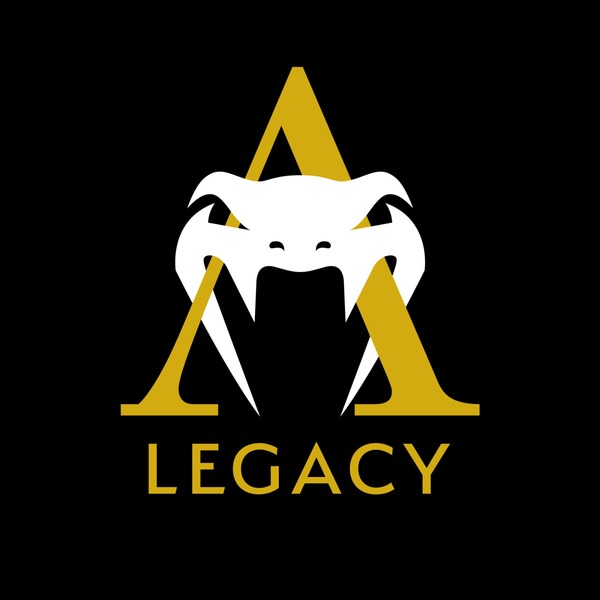Aikibudo
THE GENESIS OF AIKIBUDO
Tradition and Evolution
Aïkibudo is an original art born of the experience, martial path and teaching of Master Alain FLOQUET, whose genesis and history he shares with us in the following lines.
The birth of Aiki-Jujutsu Yoseikan :
Maitre Mochizuki's practice is based on an extraordinary martial experience, much of it acquired before Professor Jigoro Kano entrusted him with the mission of studying Daïto Ryu Jujutsu at Master Ueshiba's Dojo in 1930.
After practicing Judo and Kendo as a child, in 1924 he was accepted as a student in the judo section of the dojo of Professor Toku Sanpo, a powerful judoka and disciple of the Judo Kodokan, and also an outstanding fencer, with whom he practiced Kendo. He also studied Kendo with Nakayama Hakudo Sensei, a pupil of the famous fencer Takano Sasaburo. He also joined the "Gyokushin Ryu (玉心: spherical mind)" Jujutsu school, where he studied under Soke Oshima Sanjuro and was awarded the Mokuroku Menkyo in 1925. This was an exceptional opportunity for him to study Te Waza (arm techniques), Koshi Waza (hip techniques) and what was to become one of the riches of Yoseikan Aikido-Jujutsu (and therefore of Aikibudo), Sutemi Waza. In Toku Sanpo Sensei's environment, he became the principal disciple and Uchi Deshi of the famous and refined Kyuzo Mifune Sensei, an immense Sutemi Waza specialist and disciple of Professor Jigoro Kano.
In 1928, Professor Jigoro Kano created a special section within the Kodokan dedicated to the study of ancient martial arts, the Kobudo Kenkyu Kaï. Some of his Yudansha, including Minoru Mochizuki and Sugino Yoshio, were assigned to study Katori Shinto Ryu and Daïto Ryu Jujutsu, reporting to him every month. Mochizuki Sensei began studying Katori Shinto Ryu with the historical Shihan of this school of arms in 1928, as well as Daïto Ryu Jujutsu in 1930 with Master Ueshiba Morihei, the future founder of Aikido, who took him on as an assistant and asked him to explain the techniques he had just demonstrated to the other students. On this subject, I remember that one day, recounting a few anecdotes about this period, Mochizuki Sensei said to me: "Ueshiba Sensei did the techniques but didn't explain them, so he would look at the other students and say: 'Mochizuki will explain them to you', and I would comply".
That same year, he also studied Jodo Muso Shinto with Shimizu Ryuji Sensei. In August 1931, gravely ill, he returned to Shizuoka where, in November, he taught Judo, Kobudo and Aiki-Jujutsu at the 1st Yoseikan Dojo, founded with his brother's help, in Hitoyado cho -Shizuoka.
In 1933, Master Ueshiba awarded him the Kôde - Okuden - Menkyo of Daito Ryu Jujutsu for his teaching.
After the war, on his return from China in 1946, and after rebuilding the Shizuoka dojo known as the "Yoseikan", he resumed teaching his disciplines - Judo, Katori Shinto Ryu, Kendo, Karate, Jodo and Aiki-Jujutsu. Over time, this exceptional martial experience merged within him and gave birth to Yoseikan Aiki-Jujutsu.
In the two decades since 1931, Master Ueshiba Morihei's teaching and practice had evolved into a new art, Aikido, which was formalized under this name in 1947.
So when Mochizuki Minoru Sensei, who had very strong emotional ties with Master Ueshiba and immense respect for him, received from the latter the very high title - for the time - of 8th dan in Aikido, He gave the name Aikido-Jujutsu to his art of Aiki-Jujutsu, but Mochizuki Minoru Sensei did not practice Aikido.
From aikido-jujutsu to Yoseikan-budo to Aikibudo :
When the Association Culturelle Française d'Aikido (ACFA), technically headed by Tamura Nobuyoshi Sensei, became part of the Commission Nationale d'Aikido (CNA) within the Fédération Française de Judo et Disciplines Associées (FFJDA), Hiroo Mochizuki Sensei (with my participation between 1968 and 1969) was already working on the development of Yoseikan-Budo, concretizing in this nascent art the unity of his martial skills.
As for me, I continued to promote the Aikido-Jujutsu of Master Mochizuki Minoru. However, my practice was gradually changing and taking on a form more in keeping with my traditional, progressive and pragmatic quest. My practice, since 1963, was already different from that brought back from the Yoseikan by Jim Alcheik in 1958. It had evolved firstly during the void that existed between Jim Alcheik's death and the return to France in 1963 of Mochizuki Hiroo Sensei, whose assistant I had become, and in particular because of the evolution he had brought to the practice of aikido-Yoseikan, and then gradually from 1969 onwards as a result of my martial experiences and those of my professional life.
Towards CERA and AIkibudo:
In March 1971, the CNA became the Union Nationale d'Aïkido (UNA). Within this UNA, Tamura Sensei had established a "national" method of Aikido. This method was imposed on all practitioners, an announcement made at the INS on December 1, 1973 in front of 300 representatives of all practitioners.
However, as Aikido-Yoseikan is not Aikido, in the sense of the Art taught at the Aikikai, our practitioners didn't fit in. Consequently, after one or two years of trying, a very large number of them gradually abandoned the FFJDA to join together:
- or within the CERA association, the cradle of Aikibudo, which I created in December 1974, with the help of Claude Jalbert and former students such as Bernard Ghesquière and Hervé Villers on the administrative side, Alain Roinel, André Tellier, Edmond Royo and many others on the technical side and in the regions,
- or around Mochizuki Hiroo Sensei within the Yoseikan Budo Association, which he officially founded in 1975. who, in addition to his extensive karate experience, had integrated into his Aikido-Mochizuki practice the concepts of Ma, Hyoshi (拍子) and Sen, derived from his father's teaching, as well as that of circle movement inspired by his practice experience, 2 years before his return to France, at the Iwama dojo where Ueshiba Moriei Sensei taught.
André Nocquet, stripped of his legitimacy as head of Ueshiba Aikido and supported by his group, also left the UNA and took refuge in the Fédération Française d'Aïkido (FFAD), an association chaired by Doctor Warcollier. In February 1976, our CERA group in turn joined the FFAD under the name "École CERA". In 1978, we created a new structure, the Fédération Française d'Aïkido et de Kobudo (FFAK), to meet ministerial requirements for accreditation, which would then group together three schools: Me Nocquet's CAB (Cercle Aïki-Budo), Me Noro's Ki no Michi and CERA with myself.
That same year, Mr. Marc Bigoureau, the director of SEDIREP (a martial arts equipment sales company) let me know that the president of UNA wanted to talk to me. He organized a meeting over a friendly lunch, during which he suggested I return to the UNA FFJDA, where it would be conceivable for me to develop an Aiki-Jujutsu section of which I would be Technical Director, while Tamura Sensei would be Technical Director of Aikido. Why not, but I had outgrown the notion of Jujutsu, my practice was no longer Aïki-Jujutsu and, if it was to change name, it had to highlight the values attached to the BU (武) of "Budo", both martiality and mastery of violence (BU meaning "to stop the spear"), associated with the principle of "Aïki" this name had to be for me: Aïkibudo "合気武道". In 1978, Minoru Mochizuki Sensei asked me to take charge of IMAF (the International Martial Art Federation) France and Europe. This Japanese Budo federation brought together many high-level personalities, such as Masters Mochizuki Sensei, Sugino Yoshio
Sensei and was presided over by His Excellency Prince Naruhiko Higashi Kuni, uncle of the Emperor of Japan and former Prime Minister.
It was a time when these masters came to France and other European countries to run seminars. On May 19 1982, during a seminar we had organized in Paris with Sensei Mochizuki Minoru, Sugino Yoshio and Torigai Yoshi, the UNA FFJDA organized a cocktail party in Mochizuki Sensei's honor, to which I was invited, in the salons of the Hôtel Maillot. On hand were Minoru Mochizuki Sensei, Hiroo Mochizuki Sensei, Tamura Nobuyoshi Sensei, the president of the UNA, and various other personalities. At one point, Mochizuki Minoru Sensei called out to me and we all gathered around me. He said to me: "Alain, what you're doing isn't Aikido. We need to change the name. He suggested "Yoseikan Budo? Of course, Hiroo Mochizuki Sensei and I respond spontaneously and echo: "No, that's not possible! Sensei then suggests Aïki-Jujutsu. My answer is: "No, that's not possible! I then say, "What corresponds to what I do is Aikibudo." Mochizuki Minoru Sensei replied, "That's fine," and the other Sensei present replied one after the other, "That's fine". From that moment on, my practice and the art that flowed from it officially took the name of Aikibudo. And so the history of Aikibudo is written.
It's clear that this meeting was organized for this purpose, because under the then generic name of "Aikido" I had been practicing, from the outset, a different art stemming from Master Minoru Mochizuki's Aikido-Jujutsu, an art whose profoundly human and evolving nature was asserting itself decade after decade. For all concerned - for Master Minoru Mochizuki, for my students and myself, for the leaders of the UNA and for all Aikido practitioners - the situation had to be cleared up once and for all, and the debate that had been going on since Jim Alcheik and André Nocquet returned to France in 1957 had to be brought to a close.
Since my evolution took place under his benevolence and on the basis of the art, spirit and ethics of Master Minoru Mochizuki, who in 1992 awarded me the Menkyo Kaiden of his teaching, it was he who had the authority and legitimacy to ask me to publicly change the name of my practice.
The originality of Aikibudo :
It is sometimes said, by simplification or generalization, that Aikibudo is a stream or style of Aikido, which is as false as saying that Aikido is a stream or style of Daito Ryu Aiki-Jujutsu. Aikido AND Aikibudo are, of course, much more than that, and the facts I reported earlier will clarify any preconceived ideas on the subject.
The technical source of Aikibudo is different from that of Aikido, even if in both cases it's Japanese Budo and the universality of Man. It stems from Master Minoru Mochizuki's vast and intense martial training (Judo, Kendo, Jujutsu, Katori Shinto Ryu, Daïto Ryu Jujutsu, Karate) and from his life experience. For my part, I have also practised these various martial arts, albeit much more modestly than Mochizuki. All this is well known, but it is based, as far as I'm concerned, on direct experience of these disciplines and on a heartfelt relationship with exceptional masters, enlightened beings who imbued me with their example and enabled me to trace my roots back to an essential source of Japanese Budo. Minoru Mochizuki Sensei, Yoshio Sugino Sensei and Takeda Tokimune Sensei, Soke of Daito Ryu Aïki-jujutsu, have placed their trust in me and passed on their teachings.
On the Budo path, it was with Kendo that I had the most important martial experience of my life, which is based on "mental availability"; the spirit and technique of this art greatly influence my practice of Katori Shinto Ryu and Aikibudo.
Finally, Aikibudo also has a pragmatic nature and construction, stemming from my life experience, built mentally and physically on the terrain of violence, where the gesture (or action) cannot be simulated, the intervention merely attempted, and vigilance taken for granted, on pain of irreversible risks to both physical integrity and life. "The martial path outlined here, with its clearly identified traditional sources, will enable all Aikibudo practitioners to understand the history and originality of their art.



